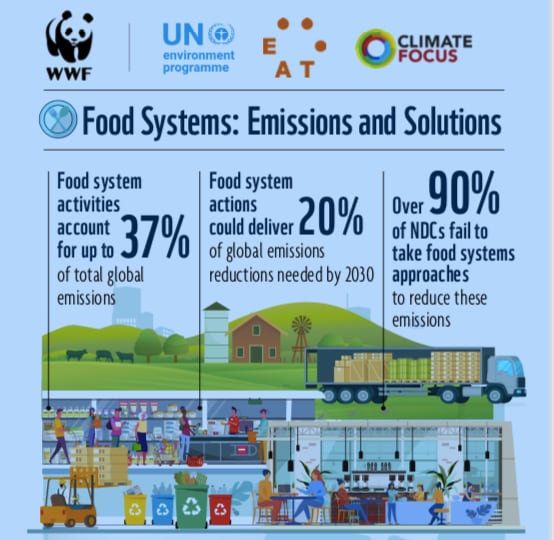As Hopwood explains, the Sustainable Landscapes Humber Project focuses on the use of cover crops by farmers growing Bird’s Eye peas to improve soil quality and significantly reduce greenhouse gas emissions.
The project is a collaboration between Yorkshire Water, Birds Eye, and supply chain consultancy Future Food Solutions, with other brands joining in as different commodities are grown in rotation. Research expertise is being provided by the University of Hull, with support from Teesside University.
A total of 40 farmers who are part of The Green Pea Company – the co-operative of 250 farmers who grow the peas – are involved in the trial, growing 405 hectares of cover crops across a year. The trial began in April 2020.
Sustainable water use
Hopwood knew Steve Cann, director of Future Food Solutions, which is working collaboratively with Yorkshire Water on sustainable water use for growing crops. “There was an opportunity to sit down with Steve as I came into this role with Bird’s Eye and talk about what we could create. There were some positive conversations with Yorkshire Water and Steve and the Future Food Solutions team to start to move this forward.”
Yorkshire Water, in turn, faced a big problem with soil erosion and nitrate runoff from fertilisers into rivers and felt more work on cover crops could aid water and nitrate retention in the soil.
Before teaming up with Birds Eye, Future Food Solutions began its existence working with processors ranging from Heineken and Muntons on malted barley to Intersnack on potatoes and Coca-Cola on sugar beet. “The original concept was to help the brands understand the issues farmers were facing with a view to heading towards a more sustainable supply chain,” says Cann. “The brands were concerned about resilience and we were concerned about profitability and taking out cost.”
Soil use
Gradually over time, its work identified one of the biggest issues for farmers was soil use, to grow better crops over longer periods, but also to be more resilient in times of drought or flood.
In a statement about the Bird’s Eye project, Cann says: “Because of the unique nature of the Bird’s Eye supply chain and interactions with the growers of the Green Pea company, peas can be the catalyst for change. The same farmers will grow wheat, barley and oil seed rape for other supply chain partners so the potential to upscale the project is huge.
“As further crops come into play, we expect to see more food brands coming on board and more farmers starting to grow cover crops as the benefits become clear. This hugely exciting project is set to grow and grow.”
Peas
Hopwood says: “The pea crop as a legume within agricultural rotations is such an important crop, taking nitrogen out of the atmosphere, fixing it into the soils. We all understand the carbon impact of inorganic nitrogens, which thankfully we don’t use within the pea crop, but the following wheat crop does use.
“How do we start to link these supply chains up, where our growers can optimise that in a link system to plant these cover crops to reduce the inorganic nitrogen input to those following wheat crops? That’s one of the main goals.”
Follow-up crops can be drilled into soil covered with the remnants of previous crops and these scraps act as organic fertiliser.
Benefits of cover crops
Trials funded by Yorkshire Water and facilitated by the UK Bird’s Eye agricultural team show growing cover crops can increase soil organic matter by up to 40 tonnes per hectare. That can sequester net more than four tonnes of atmospheric carbon per year.
As soil organic matter has fallen by 50% over the past 60 years, using cover crops to restore these levels not only has the potential to re-establish soil health, but could also help to reverse the ongoing rise in atmospheric CO2 levels.
The work builds on Bird’s Eye’s aim to foster resilient supply chains, says Hopwood. The company concentrates on crop rotation – growing a series of different crops in the same area across a sequence of growing seasons – covering an eight-year period.
“When we get back to that field in eight years’ time, we would like to feel we have had a positive impact. Finally, we would hope to look at the whole carbon piece and our sustainability within this and the great work that peas and cover crops can do to capture carbon and increase soil organic matters.” This, in turn, would boost water retention within soils and conveys a host of other environmental benefits.
Quality and yield
Improving soil quality over time would, in turn, lead to greater consistency of crop quality. “Clearly that means ensuring that yield is protected.”
In addition, the work would boost crop resilience. “And where we have resilient crops that aren’t as impacted by changing weather patterns and cycles, hopefully we will get quality and yield benefits.”
Data is being collated and analysed at the moment. It’s hard to quantify the benefits, because they depend on so many variables, not least the unpredictable impact of weather on harvests, says Hopwood. However, if the project goes the way he hopes, he envisages it could be rolled out globally to other Bird’s Eye crops.
Cann says the implications for Future Food Solutions are even bigger than Bird’s Eye. “We’re now talking to William Jackson, Nestle, Nomad. Peas is the catalyst and it’s a great place to start.”




